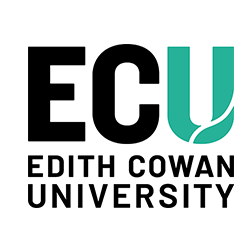Date of Award
2024
Document Type
Thesis - ECU Access Only
Publisher
Edith Cowan University
Degree Name
Doctor of Philosophy
School
School of Medical and Health Sciences
First Supervisor
Anthony Blazevich
Second Supervisor
Kazunori Nosaka
Abstract
Daily and sports activities often involve eccentric contractions when the load acting on a muscle is greater than its force production, in which case the muscles actively lengthen to absorb or dissipate mechanical energy. In pennate muscles, fascicles change both length and angle as the muscle lengthens. The fascicle rotation reduces the amount of fascicle lengthening for a given muscle length change and allows (i) fibres and fascicles to work more optimally within their length−tension and force−velocity relations, and (ii) the muscle to operate over a broader range of lengths than when rotation is absent. The effect of fascicle rotation on muscle and fascicle length changes can be characterised by a muscle gear ratio: Δ muscle length/Δ fascicle length. Muscles that operate in high gear are potentially at lower risk of strain-related damage and injury. However, despite the functional importance of fibre rotation and gearing during eccentric contractions, most of our understanding of how fascicles and muscles behave comes from studies of animal or human muscles during concentric or isometric contractions. Relatively little is known about how muscles behave, and the factors affecting their optimal function, under eccentric conditions in vivo.
This thesis consists of four studies. The first study (Chapter 2) is a comprehensive review of the literature defining muscle gearing and its functional importance and reviewing the factors influencing muscle gear changes under varying contractile conditions. Fundamental factors identified, primarily from isolated muscle experiments and mathematical modelling, include initial pennation angle, fascicle vectorial forces, extracellular matrix properties, and fluid and associated intra- and extra-muscular pressures. The findings revealed that muscle gear typically decreases with contractile force in isolated muscle preparations but either decreased or remained unchanged in vivo. These differences may be related to the presence of in-series elastic tissues (e.g., tendons) and the influence of lateral pressures exerted within synergistic muscle groups, which may affect shape changes in muscles operating in vivo. The lack of information on muscle gearing during eccentric contractions in vivo prompted the subsequent experiments conducted in this thesis.
Study 2 (Chapter 3) presents a hybrid structure in which inconsistencies in nomenclature, mathematical computation methodologies, and the anatomical inputs used to calculate muscle gear are reviewed. Then, muscle and fascicle behaviour data collected from medial gastrocnemius during passive and maximal eccentric contractions were examined to reveal significant effects of the anatomical inputs and muscle gear calculation methods. Differences in muscle gear were present when contrasting the use of the muscle segment vs. the whole muscle length changes in the calculation, with differences being particularly evident during active versus passive muscle lengthening.
Data collected in the third study (Chapter 4) showed that muscle gear increased with eccentric contraction intensity and decreased with muscle length, i.e., fascicle behaviour and muscle gear were muscle length- and torque-dependent. Additionally, the data showed that initial pennation angle, rather than the magnitude of fascicle rotation, was the primary factor explaining length- and torque-dependent gear changes under the current experimental conditions.
The final study (Chapter 5) revealed that muscle and fascicle behaviours during submaximal eccentric contractions were unchanged after the performance of maximal concentric (i.e., non-damaging) plantar flexor contractions that promoted significant functional fatigue, i.e., loss in concentric force and plantar flexor activation. This suggests that changes in muscle shape during the submaximal eccentric contractions were relatively unaffected, which may help the muscle retain function in the face of fatigue.
The findings of the present research improve our understanding of muscle and fascicle mechanics in vivo during eccentric contractions in humans, providing evidence that contractile force influences architectural behaviour and muscle gearing of the human medial gastrocnemius in a way that differs from isolated muscle preparations, and that concentric‑induced muscle fatigue has little influence on the muscle mechanics during submaximal eccentric contractions. Further questions are also raised, which should be examined in future studies.
DOI
10.25958/p6gc-p713
Recommended Citation
Daros Pinto, M. (2024). Muscle gearing during eccentric contractions in vivo. Edith Cowan University. https://doi.org/10.25958/p6gc-p713

